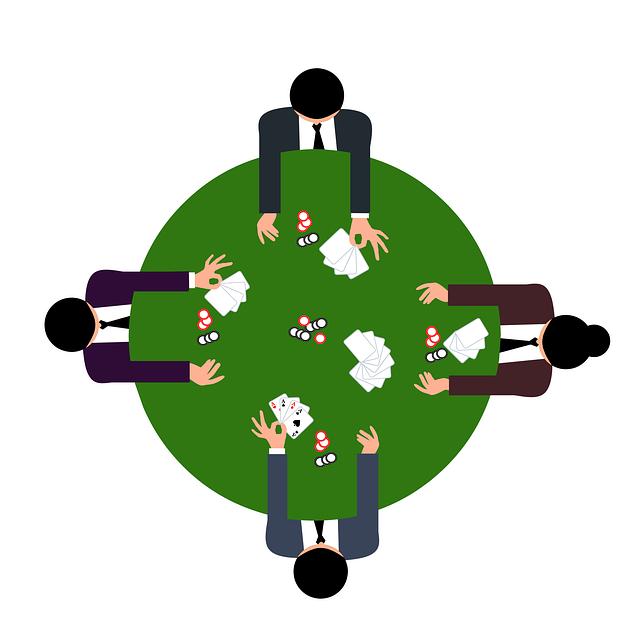In recent years, the LGBTQ+ community has expanded and developed numerous flags that represent various sexual orientations. One such flag that has gained recognition and visibility is the Ace of Hearts flag, a powerful symbol representing asexual (ace) sexuality. Designed with thoughtful intention, the Ace of Hearts flag holds significant meaning and offers a visual representation of this often misunderstood and overlooked sexual orientation. In this article, we will delve into the Ace of Hearts flag’s origins, colors, symbols, and the broader significance it holds within the ace community. By exploring its meaning and essence, we hope to foster a greater understanding and appreciation for ace individuals and their unique journey within the rich tapestry of human sexuality.
Ace of Hearts: Understanding the Symbolic Meaning of Ace Sexuality Flag
The Ace of Hearts: a vibrant representation of Ace sexuality. This flag, adorned in bold shades of black, gray, white, and purple, holds deep symbolic meaning for those who identify as asexual. Let’s dive into the rich tapestry of symbols that make up this flag, and unravel the story it tells about the Ace community.
The colors of the Ace of Hearts flag are not chosen at random; each hue carries significance. Here’s a breakdown of what these colors symbolize:
- Black: Represents asexuality as a whole, mirroring the spectrum of all identities within the Ace community.
- Gray: Signifies gray-asexuality and demisexuality, which fall on the asexual spectrum.
- White: Symbolizes non-asexual allies and partners who play an important role in supporting and understanding the asexual community.
- Purple: Reflects community and pride, a vibrant call for unity within the asexual population.
The Ace of Hearts flag is a powerful emblem, visually capturing the intricate layers of Ace sexuality. Its design resonates with asexual individuals, inviting inclusivity and recognition. This striking symbol serves as a beacon for Ace pride, fostering awareness and understanding in a world brimming with diverse sexual orientations.

Exploring the Colors and Symbols of Ace Sexuality Flag
When it comes to the Ace Sexuality Flag, its vibrant colors and symbols hold deeper meanings for the asexual community. Each element represents various aspects of asexuality, fostering a sense of pride and identity. Let’s take a closer look at the symbolism behind this flag:
- The black stripe at the top symbolizes asexuality as a whole, representing the asexual individuals who identify with the lack of sexual attraction.
- The gray stripe beneath the black stripe represents gray-asexuals, demisexuals, and others on the asexual spectrum who may experience occasional or limited sexual attraction.
- The white stripe running through the middle signifies non-asexual individuals, highlighting the importance of allies and their support within the community.
- The purple stripe beneath the gray stripe symbolizes community and solidarity among asexual individuals, emphasizing the strength that comes from unity.
- Lastly, the ace of spades logo, displayed proudly on the left side of the flag, reflects the asexual identity as a whole, while also referencing the card often associated with asexuality.
The Ace Sexuality Flag serves as a powerful representation of the diverse asexual community. Its colors and symbols contribute to the visibility and recognition that asexual individuals deserve. By understanding the meanings behind the flag, we can foster greater inclusivity and acceptance for asexuality, ensuring that everyone feels seen and respected.
Interpreting the Shades of Grey: What the Ace Sexuality Flag Represents
The ace sexuality flag, with its sleek design and striking colors, holds deep symbolism that reflects the experiences and identities of individuals on the asexual spectrum. Let’s delve into the various elements of the flag, each representing a unique aspect of asexuality and aromanticism.
- The Shades of Grey: The primary colors of the ace flag consist of black, grey, white, and purple. Grey, in particular, represents the asexual spectrum, acknowledging the diverse range of experiences within this community. Just like the myriad shades of grey, aces possess a rich tapestry of orientations and identities, from demisexual to grey-asexual, each person finding their place along the beautiful grayscale continuum.
- The Bold Black Stripe: Symbolizing asexuality itself, the black stripe signifies those who identify as fully asexual. It embodies the absence of sexual attraction, allowing individuals to embrace their unique orientations without feeling the pressure to conform to societal expectations.
- The Pure White Stripe: Standing for platonic love and relationships, the white stripe represents asexuality’s emphasis on the significance of non-sexual connections. It serves as a reminder that intimacy and affection can have varying forms, fostering deep emotional bonds that are not rooted in sexual desire.
- The Vibrant Purple Stripe: The final and eye-catching purple stripe represents the asexual community’s solidarity and visibility. It serves as a symbol of activism and empowerment, encouraging aces to unite and raise awareness about asexuality. This stripe embodies the strength and resilience of those evoking change and fostering understanding in a world that often overlooks or misunderstands their experiences.
- Interpreting the Flag: It is essential to understand that interpretations of the ace sexuality flag may vary among individuals. Just as the asexual spectrum is diverse, so too are the personal connections and meanings attached to the flag’s symbolism. By embracing these colors, aces celebrate their shared experiences while acknowledging their unique journeys, ultimately fostering a sense of inclusion, diversity, and unity within the asexual community.

Unveiling the Hidden Messages: the Significance behind Each Element on the Ace Sexuality Flag
The Ace Sexuality Flag: A vibrant symbol representing asexual individuals and their experiences. Look closer, and you’ll find that each color and element on this flag holds a deeper significance, weaving together a powerful message of pride, identity, and belonging.
The Black Stripe: Anchoring the flag, the black stripe represents asexuality itself. It embodies the invisibility that asexual individuals often face in society, acting as a reminder that ace identities are real and valid.
The Grey Stripe: As you move from black to grey, the flag encompasses gray-asexuality and demisexuality. This shade illuminates the spectrum within ace identities, acknowledging those who experience limited sexual attraction or only form connections after developing deep emotional bonds.
The White Stripe: Symbolizing allies and community, the white stripe acknowledges the essential support and understanding that asexual individuals receive from their friends, families, and loved ones. It embraces the unity between aces and their allies, reinforcing the importance of acceptance and solidarity.
The Purple Stripe: Inspiring creativity and individuality, the purple stripe represents the asexual community’s unique perspectives and varied experiences. It celebrates the diversity of ace identities, encouraging individuals to express themselves authentically and find strength in their differences.
Finally, The Ace of Spades: Nestled amongst the colors, the ace of spades serves as a powerful symbol of asexual pride. Its presence on the flag signifies the courage, resilience, and identity of individuals on the asexual spectrum. It reminds us that aces deserve to be seen, heard, and respected, breaking through the barriers of misunderstanding and raising awareness about asexuality.
Understanding and Embracing Ace Identity: Tips for Allies and Supporters
As allies and supporters, it is crucial to educate ourselves about asexual (ace) identity and create a more inclusive and accepting society. To truly understand and embrace ace individuals, here are some valuable tips:
- Listen with an Open Mind: Start by listening to the experiences and perspectives of asexual individuals without judgement or preconceived notions. Respect their unique journey and validate their identity.
- Normalize lack of Sexual Attraction: Recognize that asexuality is a valid orientation and not a problem to be solved. Challenge the societal notion that sexual attraction is a universal experience, and help debunk harmful stereotypes about asexual individuals.
- Educate Yourself: Take the initiative to learn about the diverse ace spectrum. Understand that asexuality exists on a broad spectrum, with different individuals experiencing varying degrees of sexual attraction.
- Respect Boundaries: Always prioritize consent and respect others’ boundaries. Understand that asexual individuals may have different levels of comfort when it comes to physical affection and discuss boundaries openly to foster positive and respectful relationships.
By following these tips, allies and supporters can create a safe and inclusive space for asexual individuals to thrive. Remember, acceptance and understanding go a long way in building a more inclusive society free from discrimination.
Frequently Asked Questions
Q: What is the meaning behind the Ace of Hearts: Ace Sexuality Flag?
A: The Ace of Hearts represents the ace sexuality flag, which is a symbol for individuals who identify as asexual.
Q: What does the flag look like?
A: The ace sexuality flag consists of three main horizontal stripes. The top stripe is black, the middle stripe is gray or a shade between gray and white, and the bottom stripe is white. In the center, there is a heart symbol, typically in shades of purple or lavender.
Q: What does each color on the flag represent?
A: The colors of the ace sexuality flag have specific meanings. The black stripe represents asexuality as a whole, while the gray stripe represents gray-asexuality and demisexuality, which are variations within the ace spectrum. The white stripe represents non-asexual partners and allies. The heart symbolizes community, love, and positivity.
Q: Who is the Ace of Hearts flag meant to represent?
A: The ace sexuality flag primarily represents individuals who identify as asexual, meaning they do not experience or have a lack of sexual attraction towards others. It is also inclusive of gray-asexuality and demisexuality, which describe those who may experience sexual attraction under specific circumstances or to a limited degree.
Q: What is the significance of the heart symbol on the flag?
A: The heart symbol on the ace sexuality flag represents love and positivity within the asexual community. It serves as a reminder that asexuality is not a lack of emotions or the inability to form romantic connections, but rather an absence of sexual attraction.
Q: Why is it important to have a specific flag for ace sexuality?
A: Having a designated flag for ace sexuality allows members of the community to visually recognize and express their identity. It promotes visibility and understanding among both asexual individuals and the broader society, fostering acceptance and respect.
Q: Are there any alternative flags or variations associated with ace sexuality?
A: Yes, while the Ace of Hearts flag is the most widely recognized and commonly used, there are other flags and variations within the ace community. Some alternative flags may include different color schemes or designs, but they generally encompass similar meanings and represent asexuality, gray-asexuality, and demisexuality.
Q: How can people show support for individuals who identify with the Ace of Hearts flag?
A: One way to show support is to familiarize oneself with the meaning and symbolism of the Ace of Hearts flag. Respecting and accepting asexual individuals, validating their experiences and identities, and fostering open and inclusive conversations are also crucial ways to show support and promote understanding within the community. The Ace of Hearts flag represents asexual individuals who experience romantic attraction. With its vibrant colors, it aims to promote visibility and acceptance within the LGBTQ+ community, celebrating the diversity of human sexuality.


